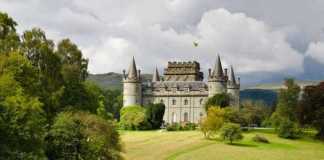Our Zulu guide’s long greying Poirot-style moustache extends way beyond his jowls, a large rifle hangs loosely at his side. A portly gut hangs over his safari shorts. “Poirot” runs through the law of the land. “If I say you get behind tree, you get behind tree – fast! If I say you climb tree, you climb tree – fast!” I listen to the African version of Simon Says as though our lives depend on it because, well, our lives depend on it. I’m in Hluhluwe-iMfolozi Park, a 96,000-hectare wilderness game park, in the region of KwaZulu Natal, Southern Africa. Hluhluwe iMfolozi Park is the region’s answer to Kruger Park.
Some argue that it’s better, not least for its varied and extraordinary topography: flat savanna, large mountains and bush forests. All incredible landmarks of Africa.
To top it off, it’s home to the Big Five – buffalo, rhino, elephant, lion and leopard. Poirot reels them off in this sequence for a reason: the order of threat to humans.
Also read:
- 20 Famous Landmarks in Africa
- Masai Mara Safari in Kenya
- Things To Do In Nairobi
- Things To Do In Mombasa
- Mount Kenya Safari Club
- Fairmont The Norfolk
- Glamping in Africa
- 18 Things To Do In Seychelles
- Climbing Mount Kilimanjaro
- 20 Moroccan Cities
- 20 Things To Do In Agadir
- 20 Things To Do In Casablanca
- 20 Things To Do In Fez
- 20 Things To Do In Tangier
- Gorilla Trekking in Uganda
- Soweto Attractions
- South Luangwa – Sanctuary Retreats
- South Luangwa Walking Safari
- 20 Safari Camps in South Luangwa National Park
- 20 Safari Camps in Lower Zambezi National Park
- Hluhluwe iMfolozi Park Safari
- Moholoholo Wildlife Rehabilitation Centre
- The Lion Whisperer
- Voluntourism in Africa
- Funny Pictures You’ll Only Find in Africa
- Lake Tanganyika – Zambia’s Hidden Gem
- 20 Safari Camps in Kafue National Park
Contents
Hluhluwe Imfolozi Park – Big Five Territory
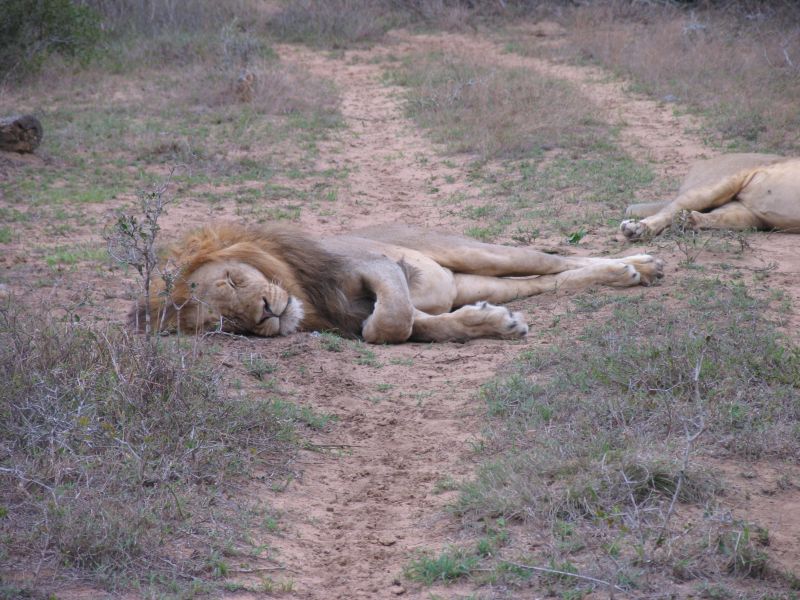
I’m about to enter Big Five territory – on foot. For around AUD$30, accompanied by an African guide, visitors can have a flora, fauna and animal experience on a 3-hour wilderness walk.
The night before our trek I start feeling uneasy. We’re safely ensconced in our small, comfortable, thatched-roofed hut at Mpila camp, one of around eight camps throughout Hluhluwe-iMfolozi Park.
A camp can comprise a number of accommodation options, from luxury lodges and huts to basic rondavels (traditional round huts) and well-equipped safari tents. The camp itself is unfenced; animals may wander through at their whim.
I’m in bed trying to sleep. The only animals I sense are butterflies – in my stomach. I toss and turn trying to shake a nightmare in which I’m sprinting from Leo the lion.
While this is a dream, its message is real: a fleeing creature turns on a lion’s killer instinct, a running human equals death.
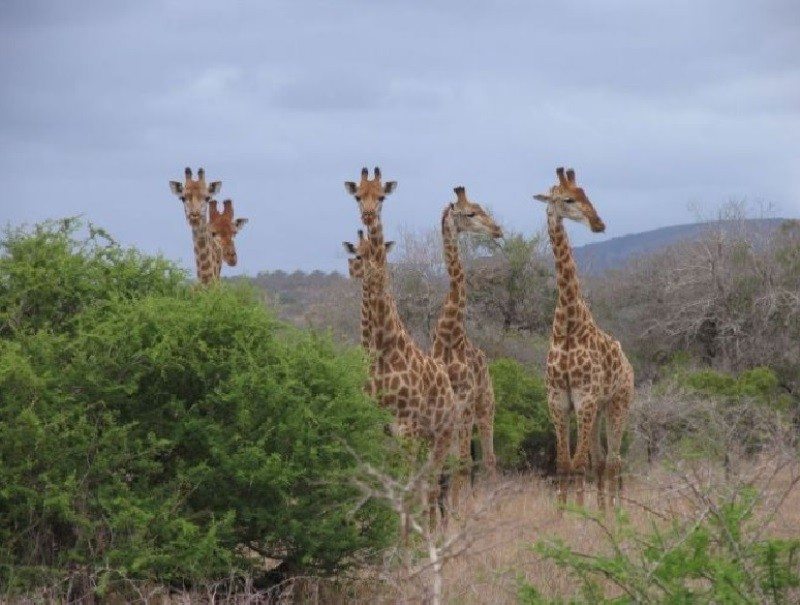
On waking at 5 am I confess to my partner: I’m not up to doing the walk.
My parasympathetic nervous system (responsible for the “fight or flight” in us all) has kicked in, at least the flight part has. I’m too jumpy.
Darling partner doesn’t force the issue – frankly, he doesn’t want the responsibility. Besides which, Mpila, atop a hill, is in a whiteout.
We can’t see a rhino’s horn length in front of us. It’s an easy decision not to go. We both turn over and fall into a deep sleep.
Somehow things seem different in daylight: the fog has lifted and I can see for miles: on one side yellow-coloured plains extend forever, on the other, the hills are dotted with trees and pockets of scrub.
Several kilometres below is a river, its sandy corrugations create striking banks. The vast sky, a variation of blues, is dotted with windswept clouds.
By afternoon, I’m psyched up to take a walk on the wild side. My partner jokes I’ve suddenly more testosterone than a randy lion (male lions have sex for 24 hours straight, after which unsurprisingly, they sleep for days).
At this stage we meet “Poirot”. After running through the game rules (in fluent English) he adds one more order, “If I say follow close in a line behind, you follow – close behind!”
Leopards at night
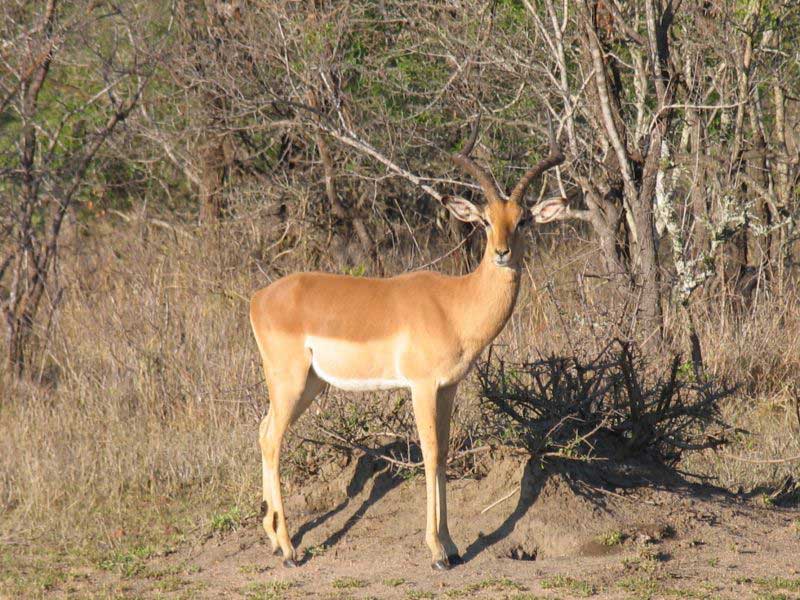
I can’t help but ask – trying to sound conversational but really to allay my fears – if it’s true a leopard roamed our camp recently (affirmative). And is it true that it de-scalped a man who was cooking at a braii, a South African barbecue (again, affirmative).
The leopard exhibited bizarre behaviour; authorities don’t understand why this normally shy animal would lie in a fairly exposed tree and attack a human in this environment.
I wipe the perspiration from my top lip. “But I understand they shot the leopard?” “Poirot” corrects the rumour, “No. We tried, but it got away.”
It’s reported that following this tragic event, bizarrely, visitor enquiries to the camp went through the roof.
But one has to be careful with wild tales. These tend do the rounds for years – Africa’s visitors often thrive on close encounters.
That’s not to say that dangers aren’t real. Nor is it to belittle the facts: more people are killed by hippos than any other land mammal (as we hear often; note, as far as animals go, it’s the malarial-carrying mosquito that kills the most humans).
Official statistics are hard to find, many deaths go unreported.
Tragically, fatalities – of both locals and overseas visitors – occur through animal charges (including car accidents and other incidents; locals in remote areas are sometimes taken by crocodiles while fishing on river banks).
Walk in the wild
Not that I need reminding.
The night before our arrival a musth elephant (an elephant on heat) went on a rampage, knocking down trees in the camp, blocking the road.
For hours, many unlucky visitors waited in their vehicles while the roads were cleared.
But back to the walk. Like two young impala, my partner and I stay close behind Poirot.
Eventually, he signals.
Stop.
We are atop a high ridge overlooking the river and a vast plain.
Raising his binoculars like a war general, Poirot surveys the scene, scanning from left to right.
I breathe in the scent of wild rosemary and thyme, of drying spoor, of animals. So intense, so sweet, so African.
It’s hot; we swig on our water bottles. I sneak backward glimpses.
Minutes pass. Finally. “There!” he says urgently.
We squint towards two tiny black dots – two elephants ambling their way to the water. He points again.
One kilometre away, beyond the river, past the thorny scrub and in a small dip – I can just make out it’s a water hole – lies another black dot. “Rhino!” This feels more like viewing spots at an optometrist’s.
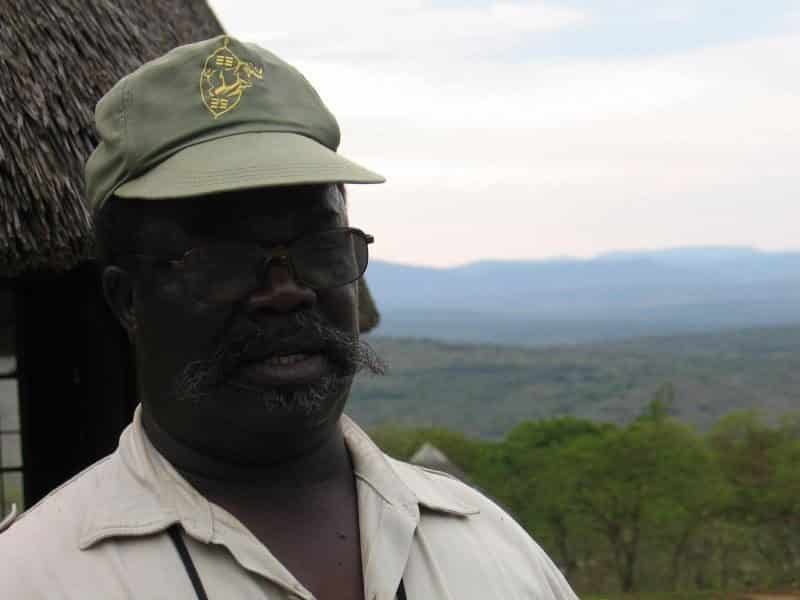
Poirot is as entrenched in his position as a deep-rooted baobab tree.
My normally patient partner becomes restless. “Let’s go!” He mouths.
I give him the “calmly, calmly” signal. I’m quietly content.
During a similar safari walk, an acquaintance was charged by a black rhino and sprang up a thorn tree. Her guide urgently fired three warning shots.
Eventually, we amble down a well-worn path. Poirot spots some rhino droppings. Known as “Africa’s newspaper”, the droppings, spoor, are more telling than a press secretary.
Poirot points out the age (how fresh it is and therefore the proximity of the animals), the rhino type (the black rhino grazes on bark and grass and gets angry and charges without obvious provocation.
The white rhino has a squarer jaw, grazes on grasses, is slower and calmer). While Poirot is a good newsreader, his English begins – and ends – with Simon Says.
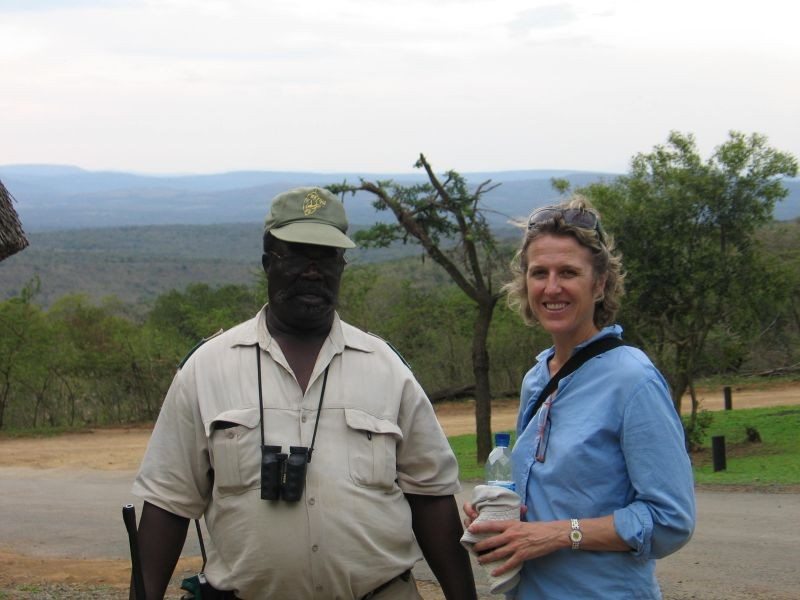
This is a great pity. We’d like to have known more about the large eagle circling above us and the colourful wildflowers that seem to spring from nowhere.
By now, we’ve done a full circle and start heading towards camp. Poirot points.
About 200 metres away is a lone female buffalo and her baby calf; the female buffalo leaves a herd to give birth. We give her a wide berth.
Back in camp, with adrenaline in check, we enjoy a cup of tea, and recline on our porch. Nearby, female monkeys gather their young.
Warthogs, resting comically on their forelegs, feed on the grass. Several wildebeest shoot past. And we view all this without taking a step.
How to Get To South Africa
South Africa Airways has flights to Johannesburg. Planning a trip to Africa? How about visiting two countries in one go? Have you been to Kenya on a Masai Mara safari? Have you considered Malawi? Malawi has a lot to offer, especially if you’re planning a family holiday. Here are some tips on how to plan your next Malawi family holiday.
Where to Stay in Hluhluwe-iMfolozi Park
Hluhluwe-iMfolozi Park offers numerous accommodation options. Mpila Camp is a spectacular camp offering cottages, huts and safari tents AUD$40-60 per person. Hluhluwe iMfolozi boasts an extraordinary trail system across a 24,000-hectare stretch of wilderness. These vary from the 3-hour wilderness walk (AUD$30) to overnight trails.
Also read:
- 100 Travel Quotes You Will Love
- 20 Quotes About Travel With Friends
- 100 Sunset Captions and Quotes
- 50 Inspiring Family Travel Quotes
- 70 Famous Mountain Quotes
- 120 Ocean Quotes
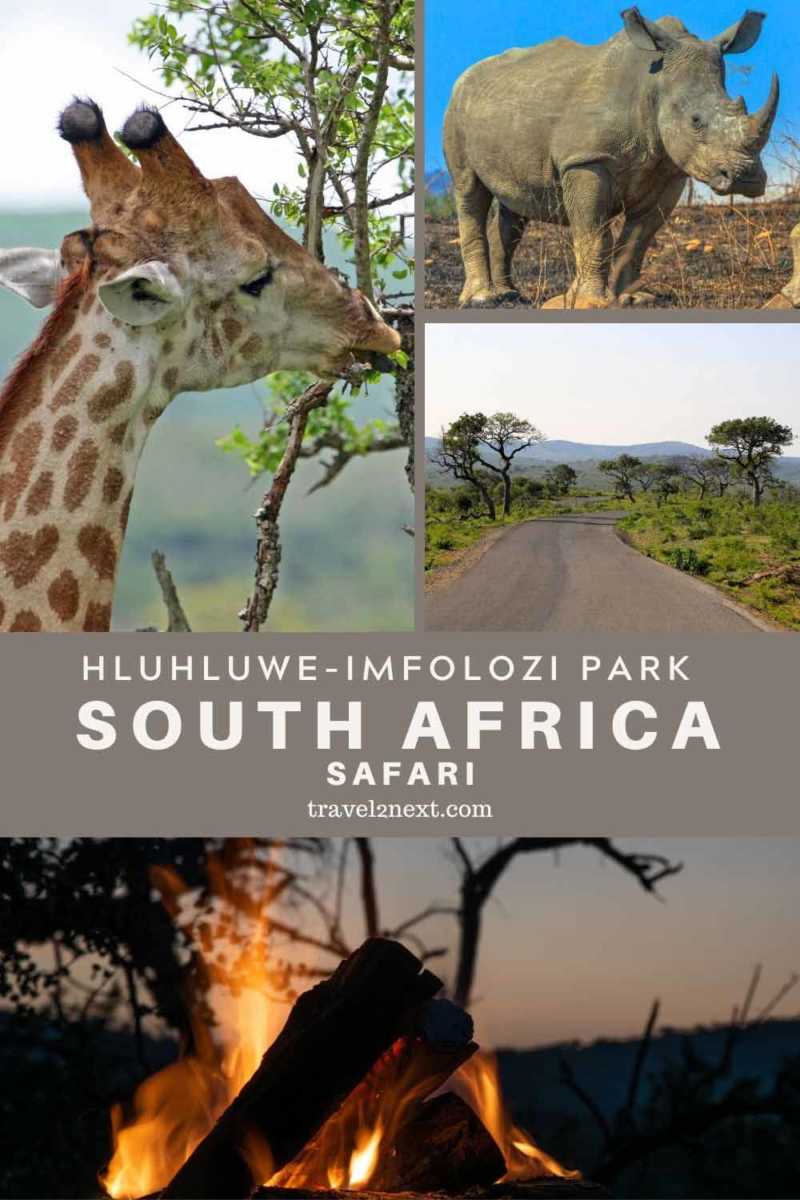
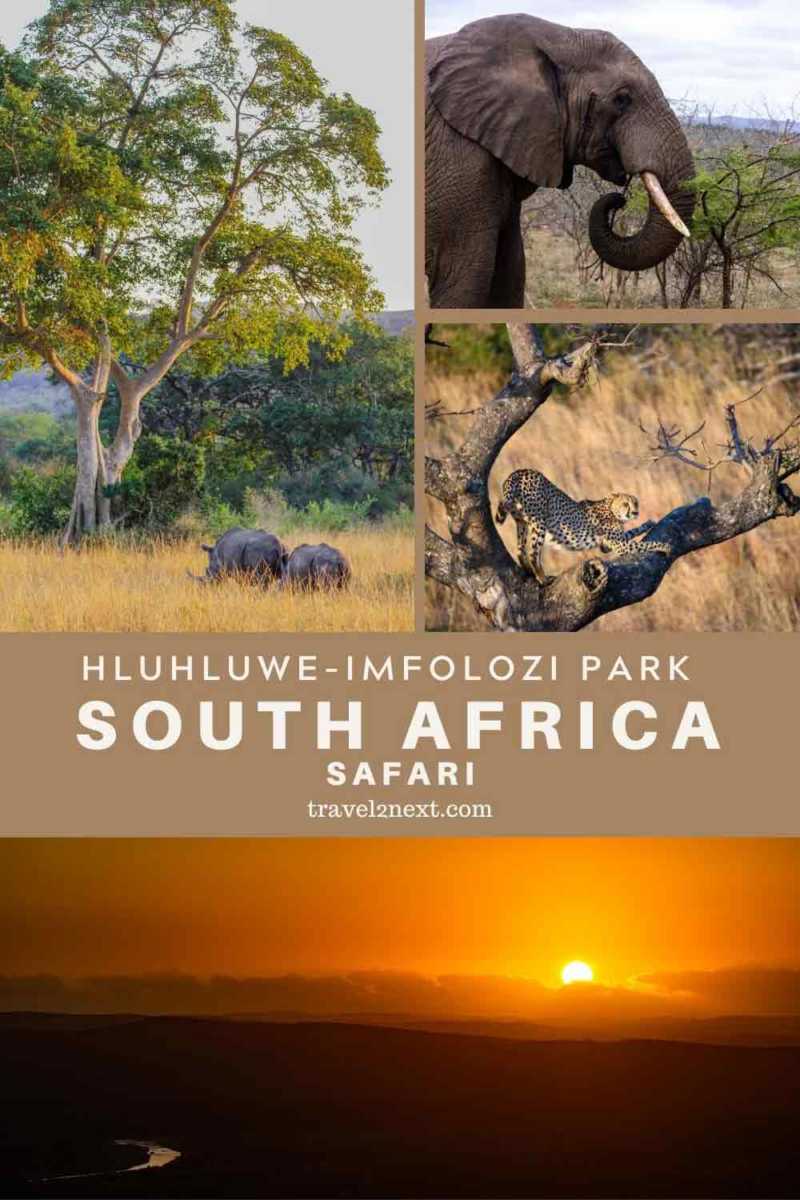
Plan Your Trip

Rent A Car – Find the best car rental rates at Discover Cars. They compare car hire companies to provide you with the best deal right now.

Find A Hotel – If you’re curious about this article and are looking for somewhere to stay, take a look at these amazing hotels.
